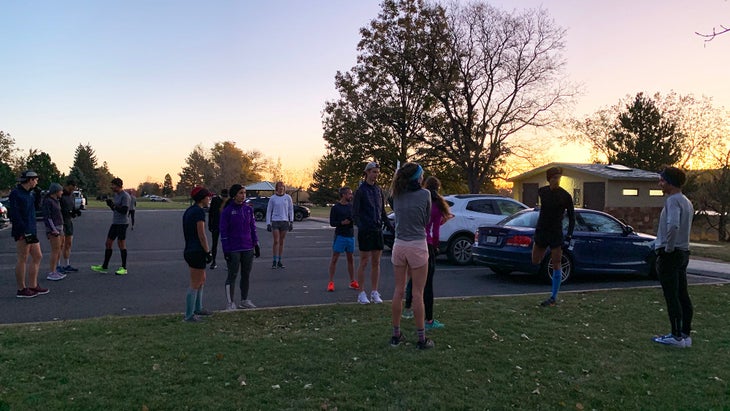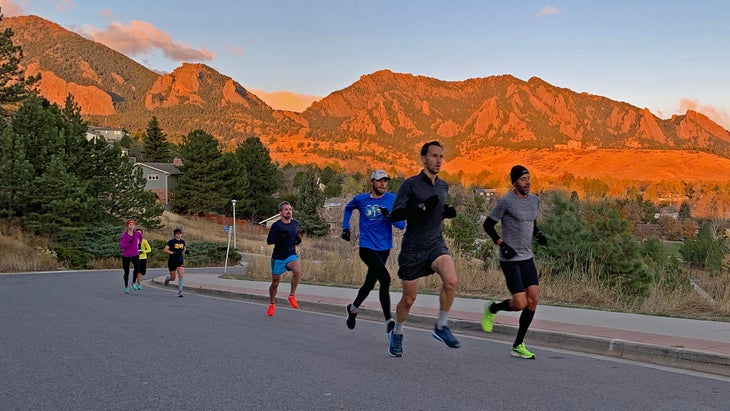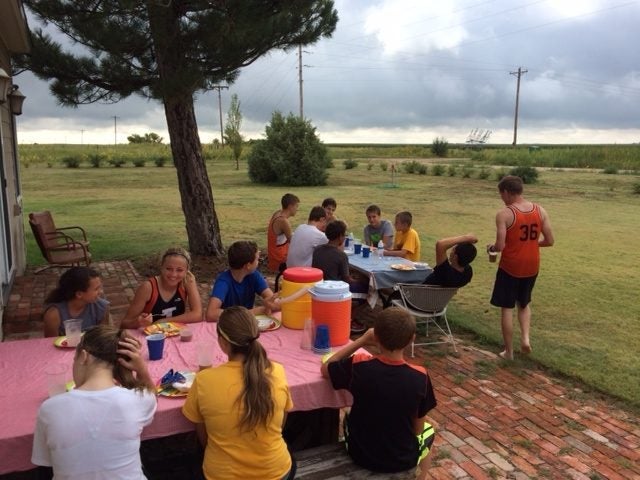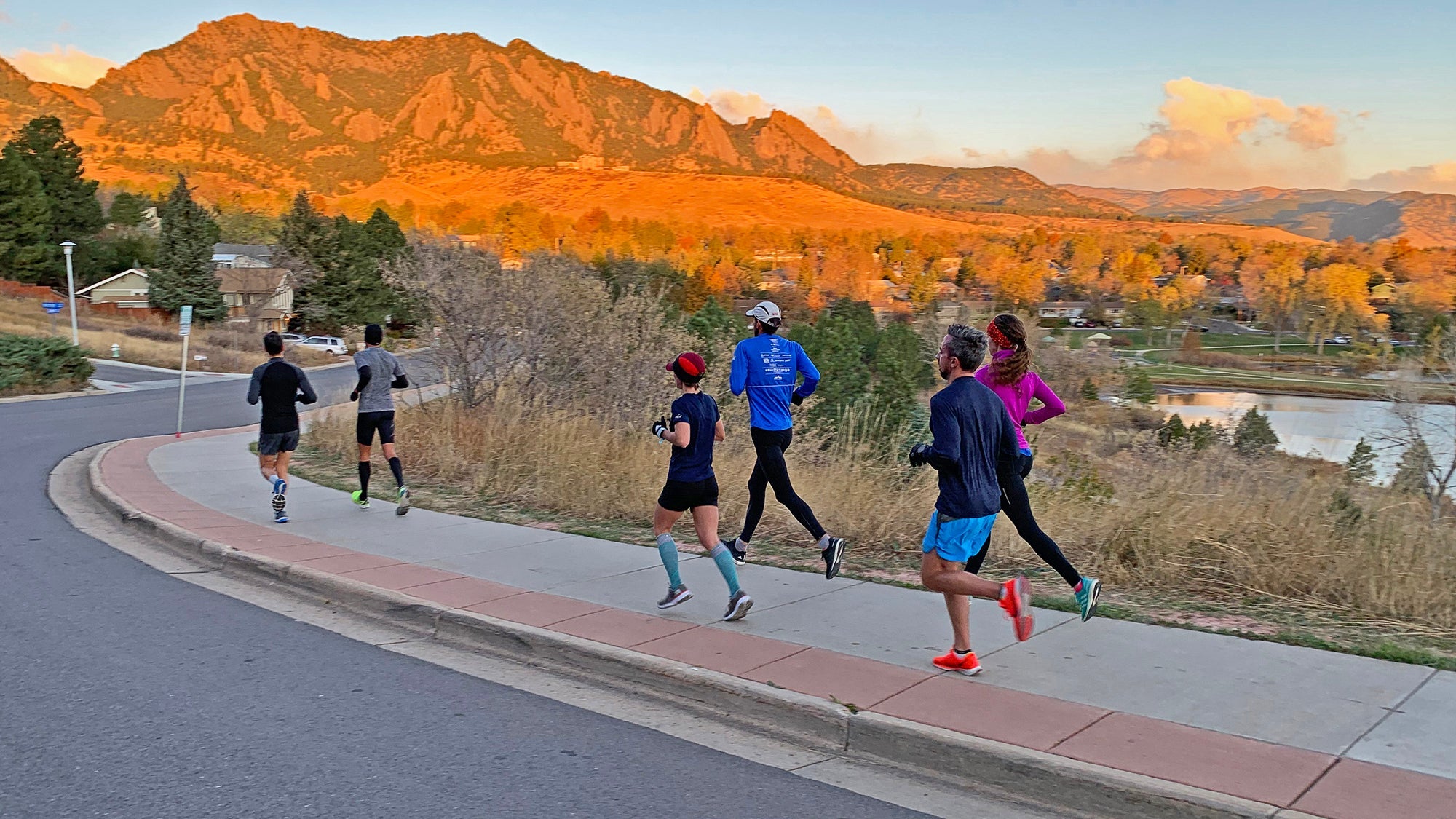When Karen Baker joined the Happy Running group in Apex, NC, four years ago, she did it solely for the social outlet—the women in the group were friendly, and it seemed like a nice way to make the miles pass by faster. And the miles did go by faster—not just because they were fun, but because Karen herself was getting faster. Within months of joining Happy Running, Baker was setting PRs left and right—in total, more than 14 minutes off her half marathon time, and 54 minutes off her full marathon. Last spring, at age 42, Baker ran her fastest 10K ever.
Anson Fatland had a similar experience. On a whim, the self-described “somewhat irregular runner” went to a meetup of a neighborhood run group in Seattle, hosted by local running shop Seven Hills Running.
“I was intimidated to show up to a running group because I didn’t consider myself a runner,” Fatland says. “But I met the nicest, most supportive people I had ever met in any sport, hands down. They were so welcoming and encouraging—not only during that first run, but after, in hoping I’d come back for another run.” Fatland showed up again and again, and quickly discovered a new love for ultrarunning.
Going faster and farther is certainly possible when training alone, but Baker and Fatland are perfect examples of how a partner or training group can be a runner’s secret training weapon. Many elite runners, from Kenyan and Ethiopian training camps to teams like the Northern Arizona Elite (NAZ), hone their excellence by training together. Indeed, the science backs it up—runners get better together. Here’s why:

Skipping a run will become a thing of the past.
When you’re flying solo, it’s easy to justify skipping a workout: It’s too early, this bed is so comfortable, and what’s one missed run, anyway? But when you know someone is waiting for you to meet them for a six-miler, you’re more inclined to kick off the covers and honor your commitment. Studies show that accountability to another person is a big factor in adhering to a training plan.
Peer pressure is now a good thing.
Research shows that the actions of others rub off on us, for better and for worse. A 2010 study published in the Journal of Social Sciences found that people gravitate towards the exercise behaviors of those around them. Those put in a “high fit” group worked out harder than those surrounded by people who appeared to have lower fitness. If you’re the only runner in your current group of friends, it’s likely the feedback you get is less than supportive, which can crush your motivation to run. But surround yourself with runners, and you’ll soon find enablers of the best kind.

You’ll go faster.
No one wants to be the weakest link in a group setting. This in known in psychology as the Köhler Effect, though runners know it as the I’ll-be-damned-if-I-get-dropped-today phenomenon. When we’re working out with others, the Köhler Effect kicks in, spurring us to push beyond the limits we might set on ourselves when training alone. Researchers at Kansas State University found that people who exercised with someone they thought was better than them increased their workout intensity by as much as 200 percent.
You’ll also go farther.
Working out with others has been found to increase the amount of time a person spends exercising, doubling the training time of those who exercised alone. Whether it’s because of the Köhler Effect or simply because time flies when you’re having fun, there’s no denying that a running buddy can push you to keep going.

There will be post-run pancakes.
Few people outside of the running community understand what it means to be “rungry” after a workout. That’s why so many running groups do more than just run—they’re also groups who grab breakfast after a Saturday morning run or bring a six-pack of craft beer to the trailhead for a post-work (and post-workout) libation. These incentives may seem silly, but research shows they’re effective—when we have a prize at the end of a workout, we’re more likely to show up and put in the effort.
You’ll get the inside scoop from runners who know.
Maybe you know nothing about running. Or maybe you think you know everything about running. Either way, running partners and training groups can teach you a thing or two (or ten). Some running groups, such as those offered through local run shops, offer formal coaching or classes. Others share their wisdom between tempo efforts; after all, runners tend to talk about running while running. Whether it’s detailed advice on how to train for your first 10K or a clever hack for preventing blisters during an ultra, you’ll be amazed at how much you can learn from your fellow runners.
Everything gets better.
The benefits of training with a group aren’t limited to running. A 2017 study found that having a training buddy enhances overall well-being: Those exercising in a group show significant improvements in physical fitness, mental well-being, and emotional stability, as well as a marked reduction in stress levels. Running alone also improves mental quality of life, but those who always fly solo for workouts don’t see the same boost in all aspects of their life.


